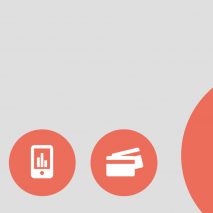The biggest motivating factor for data visualisation tools is the fact that there is now too much information to digest any other way.
We’re living in an age where more than a Zettabyte of data travels across the Internet every year. Otherwise known as one sextillion bytes (or 1,000,000,000,000,000,000,000 bytes, for short) that’s an awful lot of information. By 2020, according to Cisco, it will have doubled.
If you aren’t already using data visualisation tools in your business, or if you’ve started to dabble but aren’t planning more, here are five reasons to start getting serious about properly implementing it.
65% of people are visual learners
Even a simple principle such as comprehending the scale of a very big number can be hard to get your head round, which is why we build mental pictures to help our brains understand. For example, if every Gigabyte were a brick then a Zettabyte’s worth would be sufficient to build the Great Wall of China 258 times.
When it comes to complex ideas, the majority of people respond best to visual cues that allow them to interpret information in a graphical rather than a textual or aural context. It’s worth remembering that even if you’re happiest at home with reams of black-and-white information, your colleagues, suppliers and customers probably aren’t.
Business leaders have to be five-minute experts in everything
Not everyone can be a polymath. But senior professionals with wide-ranging responsibilities still have to absorb information quickly, and give the outward impression of knowing exactly what they’re talking about.
This explains the phenomenal popularity of infographics over the last 10 years. Offered the choice of reading a 5,000 word treatise on “Beef Farming in Devon” or a 60-second peruse through its infographical equivalent, I dare say that the uninitiated business leader would opt for the latter.
Some patterns aren’t clearly visible in columns of data
In 1931, a lowly draughtsman in a railway signalling office devised one of the world’s most influential pieces of visual representation. Harry Beck’s iconic London Underground map chose to suspend the realities of distance and proximity in favour of an ordered display of stations and lines that allowed passengers to find their way with ease around a large, highly complex and sporadically interconnected system.
A triumph of purpose over punctiliousness, Beck’s map is a vivid illustration of how opportunities that are otherwise difficult to spot (e.g. the simplest way of getting from Paddington to Green Park) can be seen in an instant.
Speeds up accurate decision making
Organisations that use data visualisation are equipped to grasp subtle changes in, for example, customer behaviours and market conditions across multiple data sets much more rapidly. And because data visualisation tools can be easily geared to process real-time information, business leaders are able to make faster decisions with confidence.
According to a Harvard Business Review survey of business managers, 80% deploy self-service analytics on the job, helping their companies embrace a culture of data-driven decision-making.
You can explore and interact with visual data maps
A host of simple visual tools are now built-in to Microsoft Office applications and other enterprise software, helping to enrich spreadsheets and presentations with charts, graphs and organisational schematics. Push beyond these rudimentary capabilities and you have the opportunity to create interactive landscape of data. A great example is Cameron Beccario’s Earth project, which takes mountains of climate data and transforms it into a beautiful view of the world that you can explore.
As self-styled ‘data journalist’ David McCandless puts it: “By visualising information, we turn it into a landscape that you can explore with your eyes, a sort of information map. And when you’re lost in information, an information map is kind of useful.”
Progressive organisations recognise the importance of wielding intelligent software to achieve their digital destiny. A glaring pitfall is a lack of comprehension borne of too much information.
Data discovery and visualisation tools can be applied to any software initiative to surface the golden nuggets of intelligence locked within business information. Just open your eyes to see the possibilities for your business.

